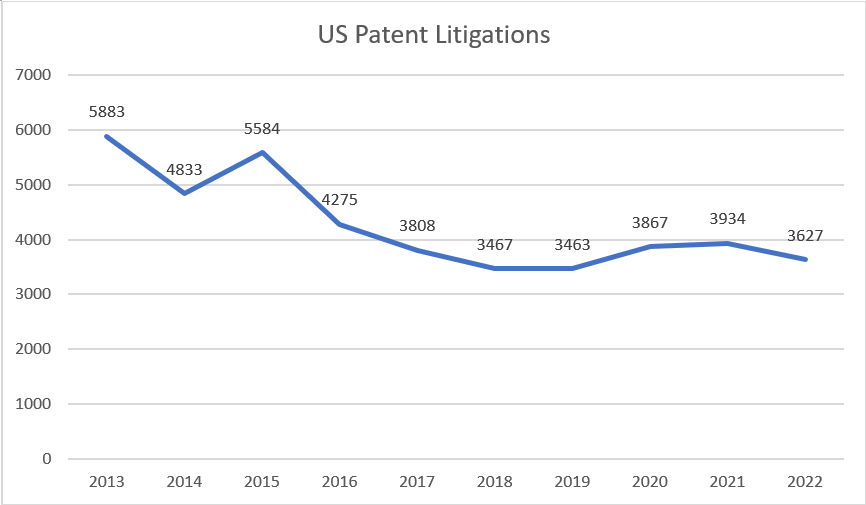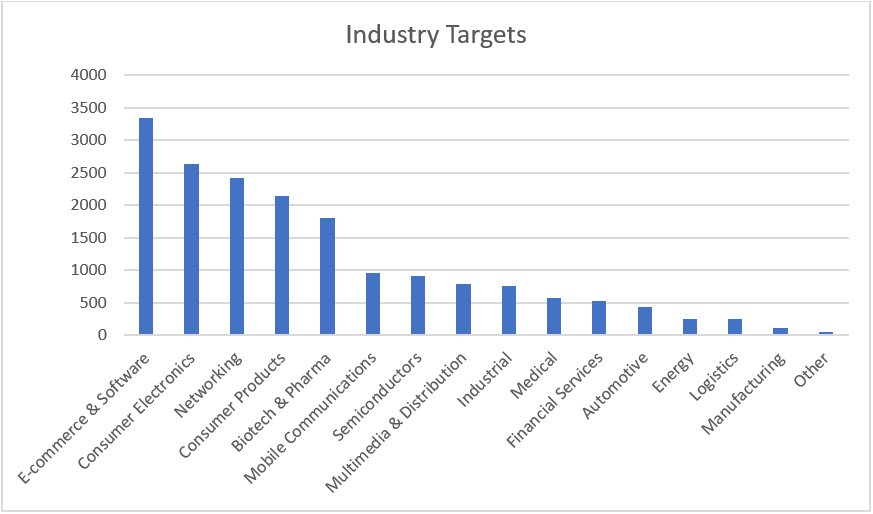A Comprehensive Guide to Patent Assertion: Fostering Innovation while Managing Risks
Patent assertion, the enforcement of patent rights through litigation, has become a prominent subject of discussion and contention in the world of intellectual property (IP). Although patent litigation can be an effective tool for patent holders to protect their inventions and monetize their IP, it has also been criticized due to its association with patent trolls and its potentially detrimental effects on businesses.
This article delves into the realm of patent assertion, emphasizing its implications for companies and their potentially infringing products. It further unravels the sectors most susceptible to patent assertions and outlines efficient strategies to minimize the risks linked with patent litigation.
Table of Contents
Understanding the Ins and Outs of Patent Assertion and Litigation
Patent litigation refers to the legal procedure of verifying the legitimacy of a patent and arguing that another party is infringing on the patent owner’s rights. It is a widely employed strategy by patent holders to safeguard and monetize their intellectual property.
The primary aim of patent litigation is to prevent unauthorized usage of a patented invention by others. This is often achieved by granting licenses to third parties, thereby permitting them to utilize the invention in return for fees or other forms of compensation. Licensing thereby serves as an efficient method for patent holders to generate income from their patents while simultaneously allowing others access to the patented technology.
Deciphering the Patent Troll Phenomenon: Fact or Fiction?
Over time, patent assertion has gained controversy due to its link with “patent trolls.” These are entities, also known as Patent Assertion Entities (PAEs) or Non-Practicing Entities (NPEs), that acquire patents primarily to assert them against others rather than using or licensing them. They often face criticism for exploiting the patent system to extract settlements or licensing fees instead of contributing to innovation, although they invariably argue otherwise. Despite this criticism, these entities have consistently dominated the patent litigation field.
Despite the differing perspectives, patent litigation remains a crucial component of the patent system. It can serve as a valuable tool for patent holders to protect and monetize their IP, while simultaneously raising controversial issues. It is therefore crucial to strike a balance between the rights of patent holders and the necessity to encourage innovation and competition.
Trends in US Patent Litigations
Over the years, patent assertion cases in US courts have remained steady. Figure 1 depicts the number of US patent litigations from 2013 onwards. Aside from the years around the implementation of the America Invents Act in 2012 and Apple’s $1 billion victory against Samsung, there has been no significant change in activity. However, there was a 12-13% increase in patent assertion cases in 2020 and 2021 compared to the two previous years, likely due to the COVID-19 pandemic, as more companies sought to monetize their patents.

Understanding Product Vulnerability to Patent Assertion
As illustrated in Figure 2, any product or feature, irrespective of whether it originates from a Fortune 500 company or a startup, could be a target of patent assertion. No business is immune to patent assertions, particularly those initiated by patent trolls for trite reasons. Startups face more significant challenges since they often lack the resources to combat legal battles. As a result, they usually capitulate to the patent troll’s terms and settle outside of court.

Products with high sales and revenue figures are most susceptible to patent assertion due to the damage calculation procedures used by different courts. Courts generally determine damages based on product sales, implying that flagship products with the highest sales figures are at the greatest risk of patent assertions. Consequently, these products should be meticulously evaluated for IP infringement prior to their launch, as this could significantly lessen the risk of patent assertion.
The Impact: Unraveling the Consequences of Patent Assertion
The ramifications of patent assertion reach far beyond the confines of the courtroom. Understanding the complete scope of patent assertion requires exploring its multifaceted impact on companies. such as:
Reputation Damage
- Patent assertion doesn’t just affect legal outcomes; it influences how companies are perceived.
- Negative publicity stemming from litigation can tarnish a company’s reputation.
- Consumer trust may erode due to perceived involvement in contentious legal battles.
Market Competitiveness:
- Entanglement in patent disputes often puts companies at a competitive disadvantage.
- Legal entanglements divert vital resources and focus away from core business functions, affecting market competitiveness.
Financial Strain
- Licensing fees and legal expenses incurred during patent litigation can strain company finances.
- These financial burdens may hinder investment in innovation and stifle growth opportunities.
- Even successful defense against patent assertion can result in substantial financial costs.
Mastering Risk Mitigation: Strategies for Success
Despite the challenges posed by patent assertion, innovators can employ a range of strategies to mitigate risk and protect their innovations.
- Conduct a thorough patent search: Before developing or marketing a new product or service, it is essential to conduct a comprehensive search to determine if any existing patents cover similar technology. This can help identify potential infringement issues early on and allow one to make any necessary changes to their product or service.
- Obtain a license: If you plan to use patented technology, you may be able to obtain a license from the patent holder. This option can be viable if the patent holder is willing to negotiate a reasonable licensing fee.
- Innovate Around Patents: If obtaining a license is not feasible or the licensing fee is prohibitively high, one can consider developing a different approach or method to achieve the same goal.
- Get a freedom-to-operate opinion: Before launching a new product or service, it is advisable to get a freedom-to-operate opinion from a patent attorney who can analyze the patent landscape and identify any potential infringement risks.
- Seek legal advice: If you are unsure whether your product or service infringes on a patent, it is crucial to seek the advice of a patent attorney. Their expertise can assist you in comprehending the legal complexities and provide you with the best course of action.
By adopting a proactive approach to risk mitigation, innovators can safeguard their intellectual property and thrive in the competitive marketplace.
Conclusion
In conclusion, patent assertion plays a vital role in protecting IP rights and fostering innovation. However, the presence of patent trolls complicates the situation by asserting patents without contributing to innovation. Companies can minimize the risk of patent assertion by implementing the strategies outlined above, thereby safeguarding their market presence and contributing to technological advancements.
Sagacious IP’s team of experts can provide assistance in devising patent counter-assertion strategies tailored to your specific needs. Our team of adept patent professionals can identify any potential infringement concerns and evaluate the strengths and weaknesses of your case. Moreover, we can assist you in negotiations with the opposition to reach a favorable resolution. For more details about our expertise, please visit our patent invalidity and patent counter-assertion service pages.
- Mudasir Ibn Bashir (ICT – Research & Analysis) and the Editorial Team




